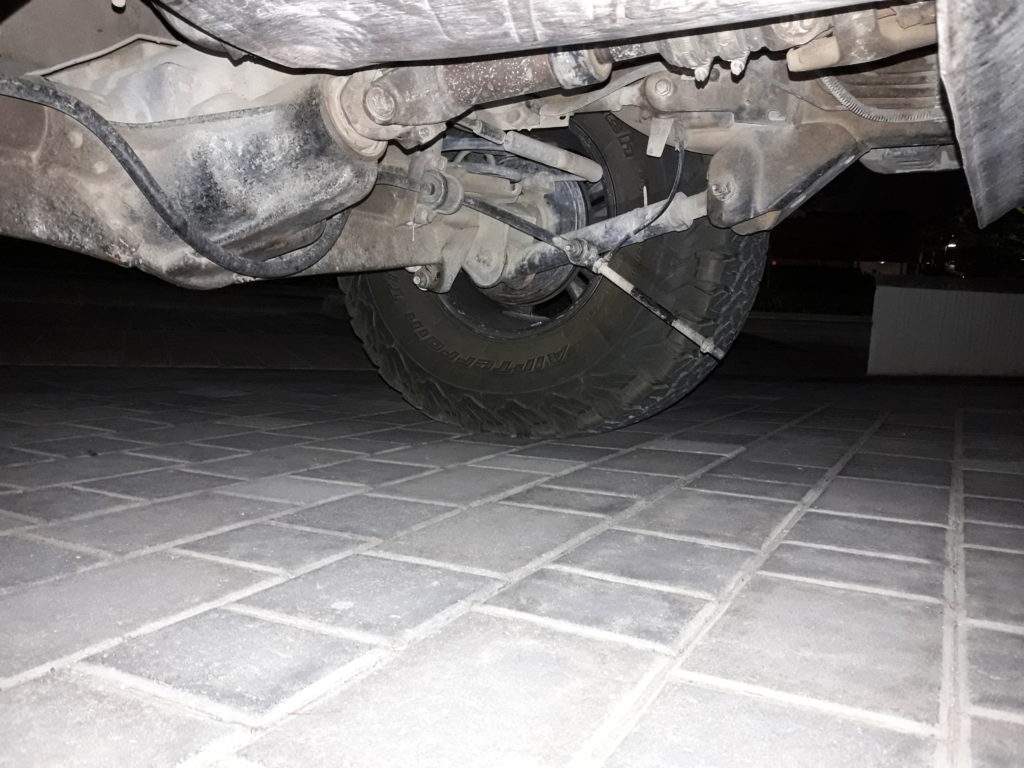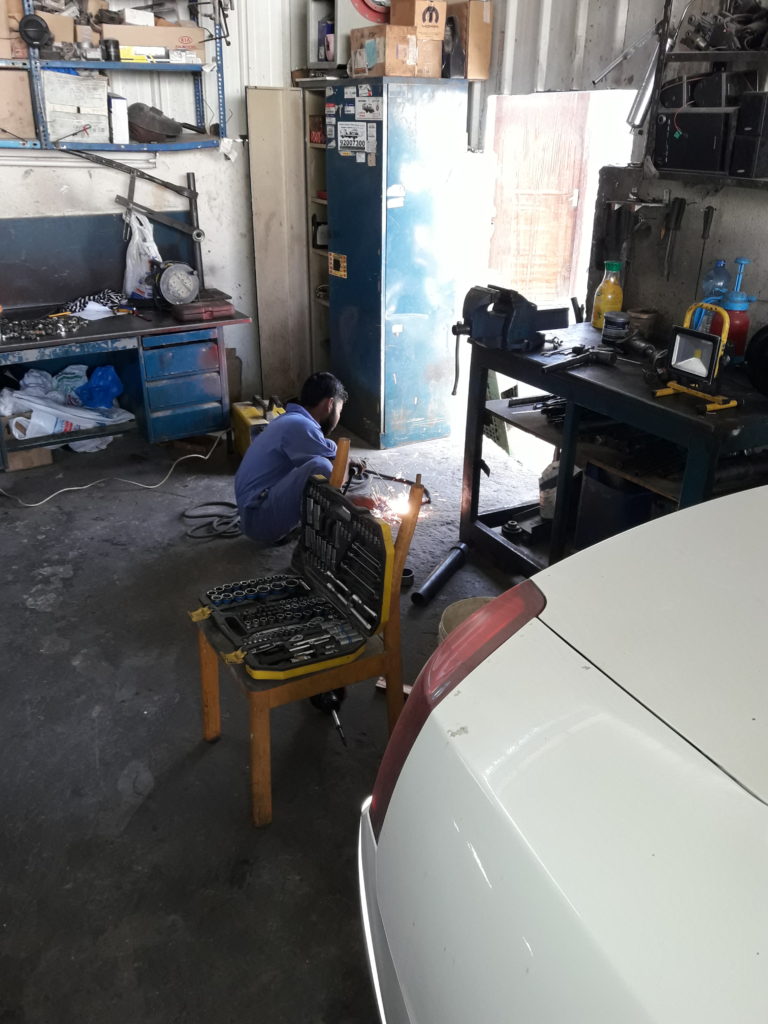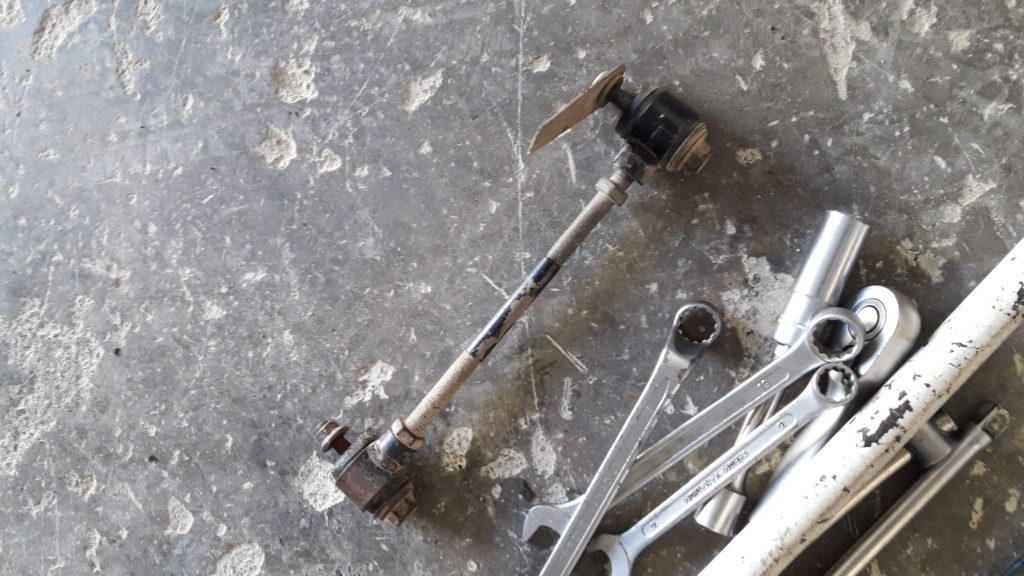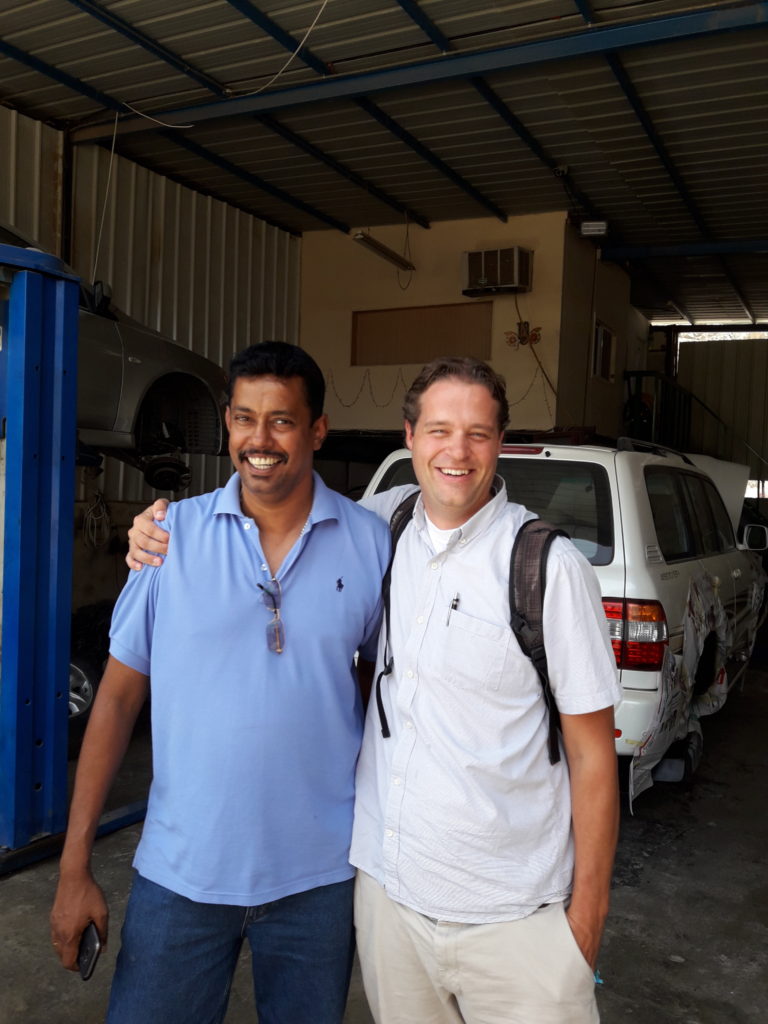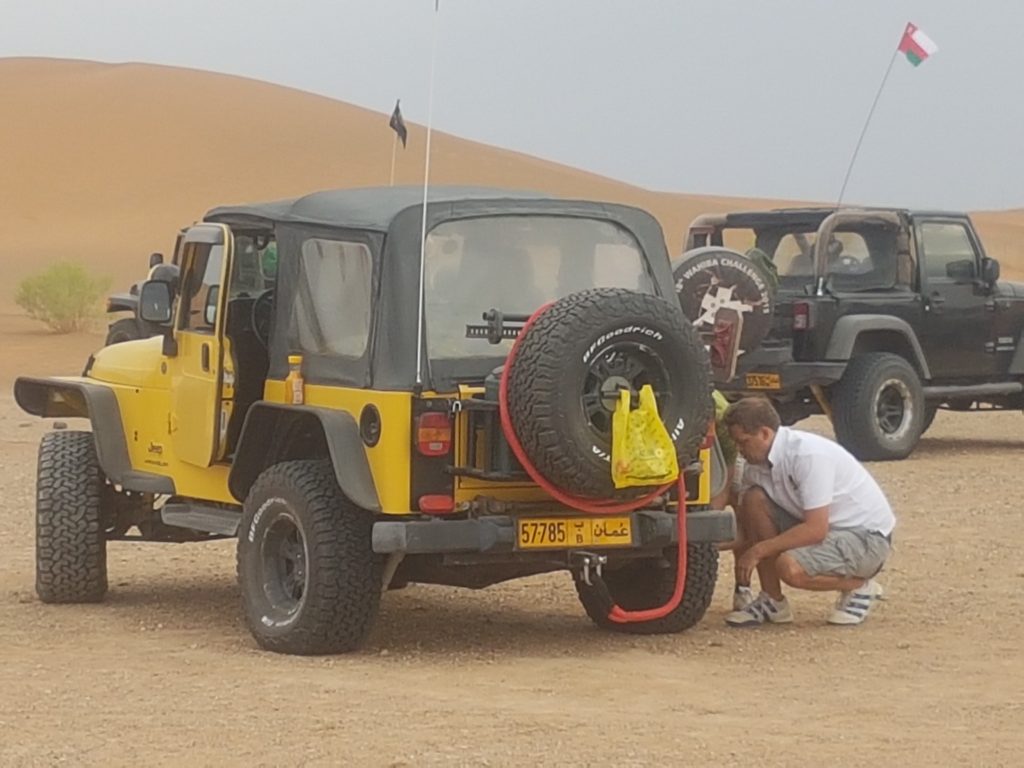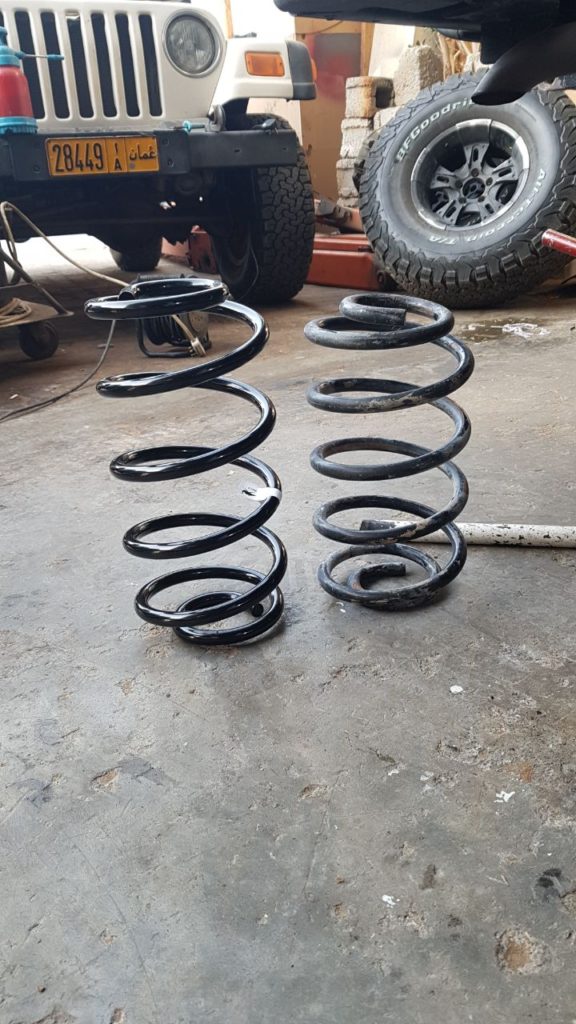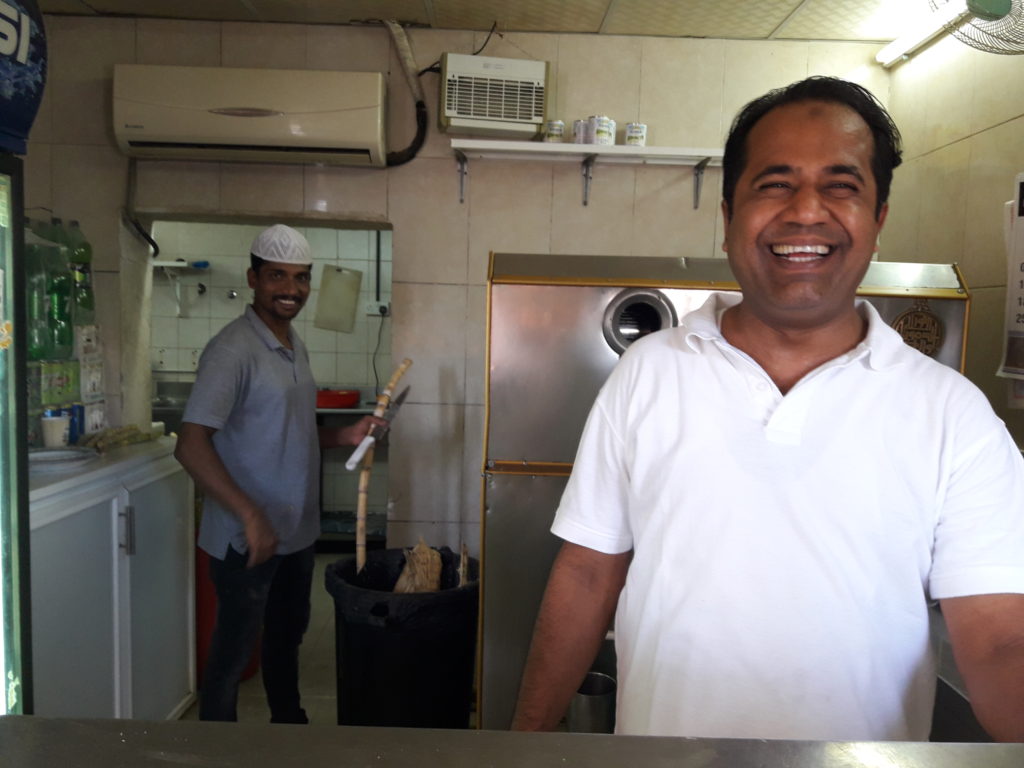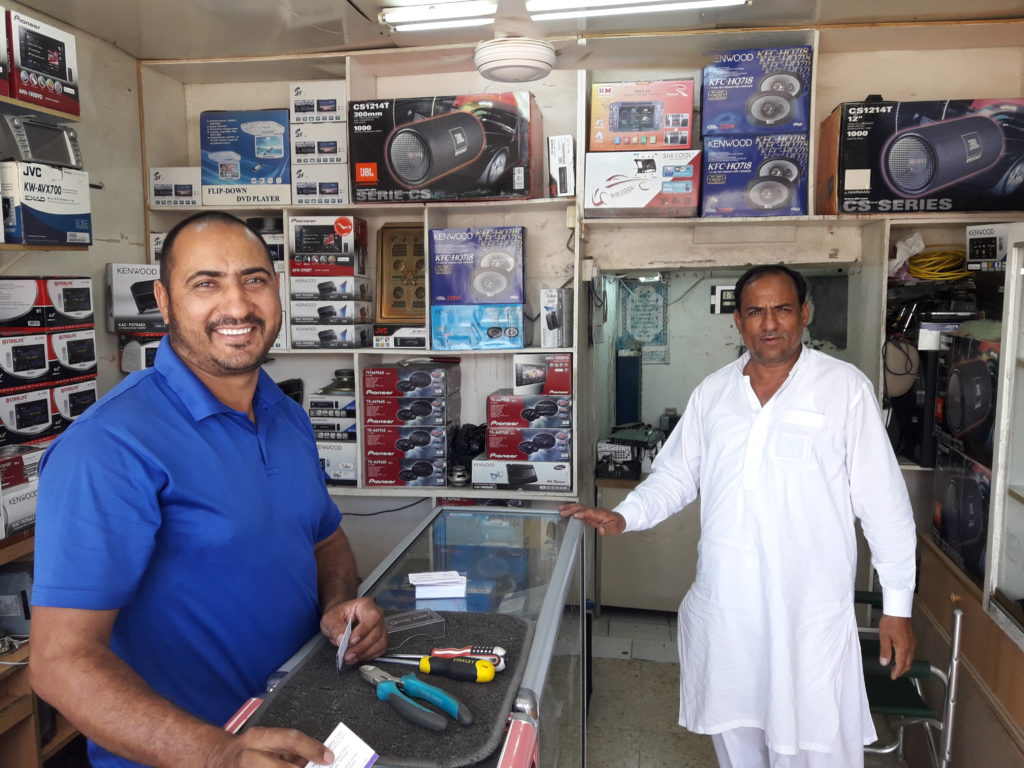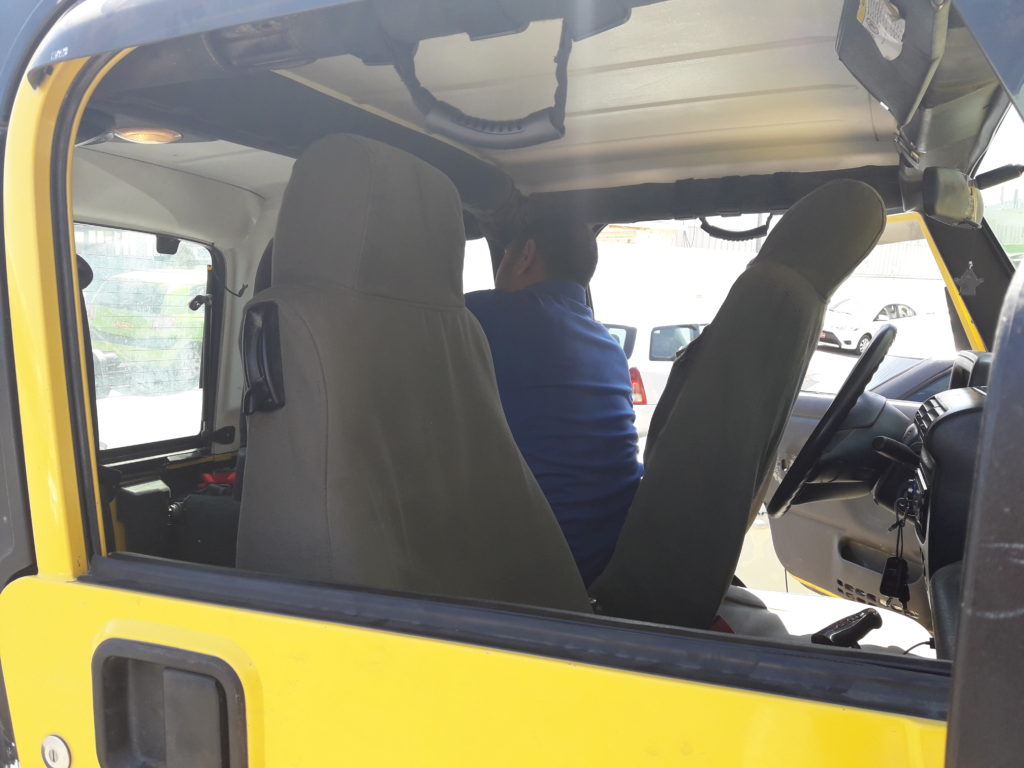Just like a boat is a “hole in the water you pour money into” an off-roading Jeep burns fuel and money to keep the tires turning.
Driving in the desert requires a certain level of punishment to the car – inexperience with desert driving adds more. When you buy an old car that has many desert miles on it you get the improvements and upgrades as well as the wear and the incomplete items on the to-do list from the previous owner. Mine had a lot of miles but had a lot of upgrades too.

The hinge on the hard top window was assembled wrong, the top part is supposed to fold under the bottom part. I fixed this the first day I had the jeep.
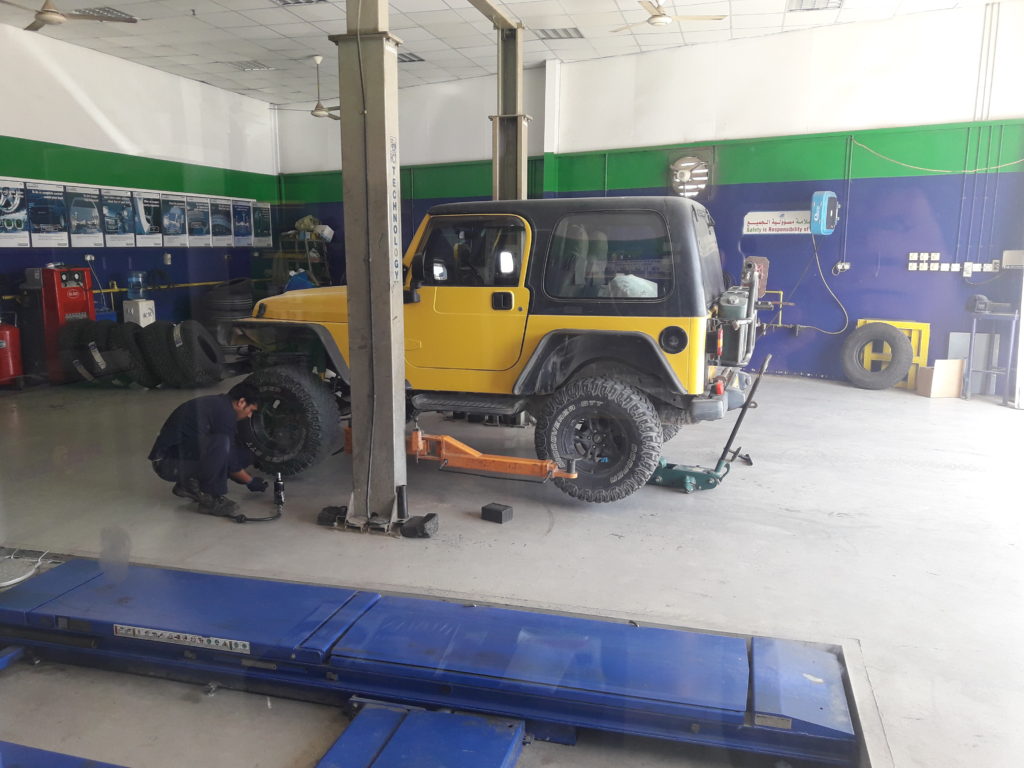
My first real expense was replacing all the old tires with new ones including one I hope to never use – the spare. All of them had side wall cracks and thread cracks; tire here start to breakdown after only 2 years. It isn’t advisable to roll tires that are more than 4 years old in the desert where they flex continuously.
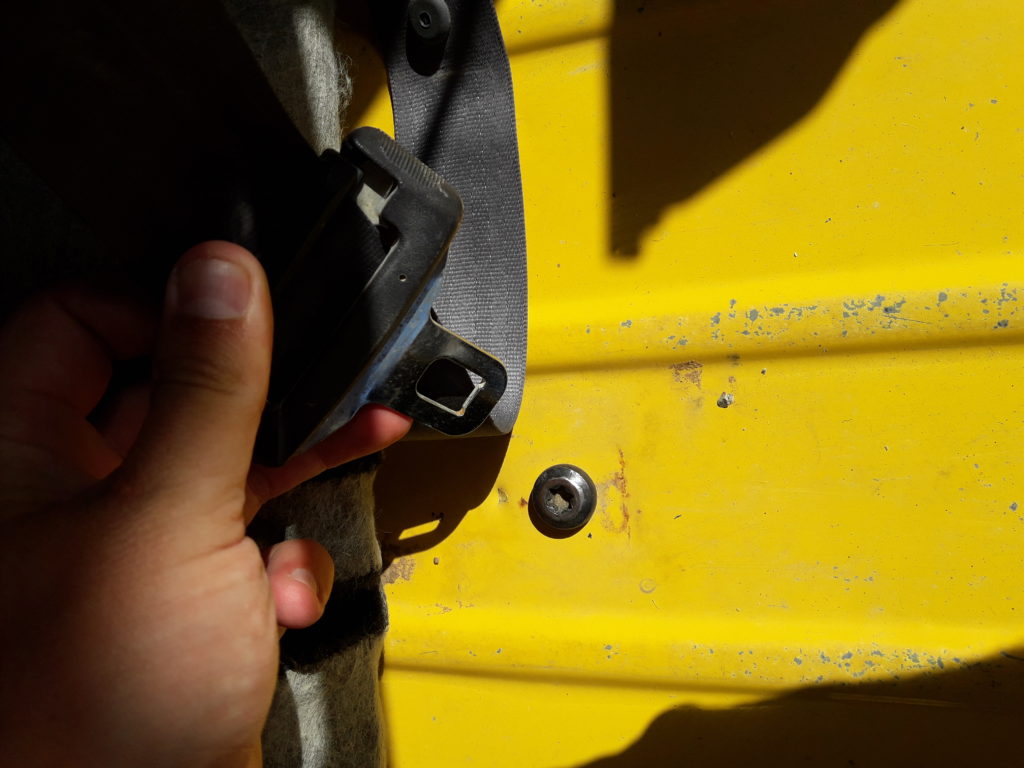
A long time ago the seatbelt female ends were removed from the center of the back of the jeep and then it was lost. I had to order a new one from the US. It attaches to the bolt, which is a special thing called a Torx screw. I had to buy tools to turn these which are used all over the jeep, in addition to metric and imperial fasteners.
My jeep came from Simon who has been an avid desert driver for about 9 years and who took me on my first crossing. On this crossing he showed me how to drive and what a Jeep TJ can take. That weekend I had stabilizer bar link come apart due to stripped threads. This was a after market link that was adjustable and I think one of the retaining nuts came loose and the threaded end was flexing in the socket. I took this to a shop during a lunch break and had it welded together – ugliest weld ever but it is still going strong.
The next weekend was the Extreme Wahiba Challenge on which I broke an upper rear shock pin and then had a spring jump out of the mount and end up sideways under the car. We pulled the shock and then drove out of the desert that way. After that trip I replaced both rear shocks and all the bushings which were worn out.
A month later I went to the Star Dunes with Mike and on this trip it became apparent that the rear springs were completely worn out. On this trip I had my first experience with jumping the Jeep. As I was running hard at a tall dune a small bump appeared on what from a distance looked like a smooth approach to the hill. There was no choice but to hit it so I adjusted my steering to make sure I hit it square and jumped while going uphill. To top it off I didn’t even make it to the top. The front suspension also took a few more big hits when we would crest the dunes, which are very steep on both sides with no flat spot on the top. This means you must crest a lot faster than in the Wahiba or you get high-centered, so the front end almost always jumps over the top of the dune and falls what seems like 4 feet on steep one to the back side. After that trip I had the springs all changed. The new ones were at least 2.5” (65mm) taller than the old ones.
The jeep also has a bunch of accessories installed but the wiring had gone rotten or the bulbs had been burned out. I tried LEDs but couldn’t find ones bright enough to replace the halogens that were there. Additionally the stereo was fried and the speakers were blown so I changed that all out too.

This is a bad picture of a relay, it allows a small switch to control an item that requires more current the switch is rated for. This one was fried along with the associated fuse with had also melted itself and the fuse holder.
Leah and I did sand training together and not long after that the clutch started to fail. I had this changed and I had the drive shafts rebuilt too. While they changed the clutch they disconnected the shifter which was already a little sketchy because one of the centering springs was broken meaning that a shift from 2nd to 3rd had to be done by feel or you would end up in 5th. It was also to hit 4th versus 2nd too.
In May, I did a trip while it was 50 C outside. The sand was about 55C and you could only kneel on it for about 20 seconds before it would start to burn your skin. I measured the temperature of the steering wheel, it was 42C and the black roof was even hotter. It seemed like the AC wasn’t blowing enough air even though what was coming out had been cooled 20 C versus ambient, about 32C. That night we camped on the mountain climbed up via a dirt road full of switch backs. On the ascent and especially the descent the power steering pump was growling quite loudly maybe mainly because I was in four low and make hard turns. This may have been exacerbated by the Aussie Locker in the front differential which limits the amount of slip and fully locks under load but now might be fully locked. If it is locked that would also explain the vibration I get I above 100 kph. More to come there.
If all of this sounds like a nightmare and a big pain in the rear then maybe off-roading might not be the hobby for you. For me I have had a ton of fun with this in the desert and in between trips. I have learned more about cars (or Jeeps) than I knew before. Every time something breaks it is an opportunity learn and for small jobs a chance to get my hands dirty. Some of the skills I developed while living on the boat directly translate over to the Jeep two especially on the electric side of things. When it isn’t way above 40C I come home and pop the hood of the Jeep and get to work.
What I also like is all the people you meet who do work on the Jeep. Every time I need something now I head to Wadi Kabir and start asking around for help. Not long after that someone will point you to the right person to talk to about your problem and you’ll get it fixed. Add a pin to your Google Maps for the next time and move on. This is great except for the fact that I am usually wearing work clothes and the shops are all really dirty or at least dusty – so I come back to work sweaty, dusty and sometimes dirty. So far I haven’t had to throw away some clothes after a Wadi Kabir lunch trip, though I have had to go home and change a few times. I need to start carrying coveralls in the Jeep!
Mike and I have also found a favorite lunch stop in Ruwi which is right beside the stereo shop and the electrical supply shop. The shop is a hole in the wall which is dominated by a sugar cane press which they use to make drinks. We tried one and it was awful… sugar cane is for making rum or sugar in my opinion not drinking the squeezed juice. They also make really good fresh squeezed juices and a pretty good sandwiches too.
On the money side all of this work hasn’t been near as expensive as it would be in Canada due to the very low labor charge. Parts are generally relatively easy to find usually at a price close to the internet prices. The few times I have had to ship a part in the cost was a lot higher as we pay about 5 omr per half kilogram to ship via Aramex ($25 cad / pound).
People sometimes laugh when I answer the question “How’s the Jeep running” and I tell them the next job planned but for me I don’t even mind, it’s all part of the fun.
